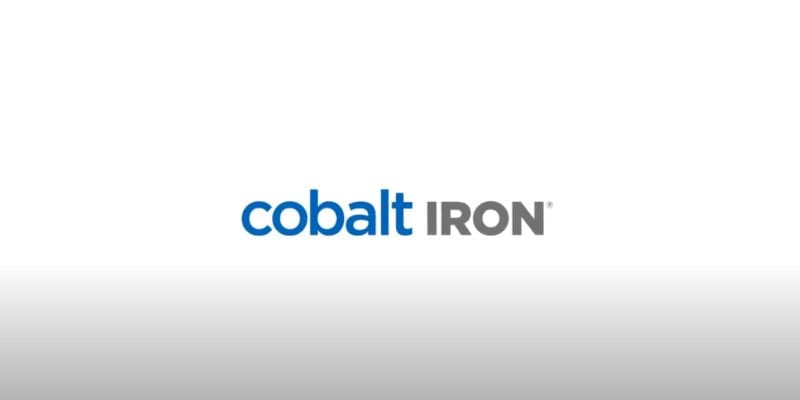Data Backup Best Practices with Cobalt Iron’s Andy Hurt

 When it comes to enterprise backup best practices, there are a lot of things to consider. Depending on your environment, factors such as recovery time, network failure, ransomware attacks and others have varying levels of importance. However, the impact that a solid best practices framework has on a backup environment will always be positive. We had a chance to sit down with Andy Hurt of Cobalt Iron, which was recently recognized as the 2020 North American Data Backup Leader by Frost & Sullivan, to discuss data backup best practices.
When it comes to enterprise backup best practices, there are a lot of things to consider. Depending on your environment, factors such as recovery time, network failure, ransomware attacks and others have varying levels of importance. However, the impact that a solid best practices framework has on a backup environment will always be positive. We had a chance to sit down with Andy Hurt of Cobalt Iron, which was recently recognized as the 2020 North American Data Backup Leader by Frost & Sullivan, to discuss data backup best practices.
What does a typical enterprise backup environment look like?
Most backup environments look a lot like alphabet soup – multiple backup products, legacy workload requirements like AIX and DB2, tape-based backup, etc. Additionally, there are point products for cyber security, and now the need to support private, hybrid, public cloud, and cross-cloud infrastructure. In other words, backup is typically extremely complicated to manage and requires multiple skill sets to successfully backup an enterprise environment.
How has the data backup environment changed over the past 10 years?
Over the past 10 years, backup has gone through multiple waves of innovation. For most of the past 10 years, backup has been dominated by purpose-built backup appliances (PBBA). These backup appliances were proprietary in nature, extremely expensive to purchase and maintain – which created vendor lock-in and unhappy customers. Recently, however, backup has gone through extreme disruption. Now, customers are looking to run backup on commodity-based compute and storage and delivered as Software-as-a-Service. Enterprises are also looking to “future proof” their backup investments by ensuring that their backup software supports both legacy workloads as well as modernized deployments such as AWS, Azure, Alibaba, Google, and IBM clouds.
What problems commonly impact data backup environments?
Most enterprise backup environments struggle having to manage multiple backup solutions for specific jobs: Virtual Machines, Cloud, Compliance, and Legal requirements, Bare Metal, etc. Not only does this require subject matter expertise across multiple different backup solutions, but it also becomes more expensive as organizations are not able to reach economies of scale with one vendor.
On top of this, enterprises are fighting to protect their data against cyber threats and ransomware. Most organizations are deploying point products to protect their data against hacks, adding yet another tool to manage, maintain, and pay for. When it comes to data protection, backup needs to be thought of as an additional defense against threats. It needs to fit into the cyber security response and not just be an afterthought.
What are the ideal solutions for improving the backup environment?
The ideal backup solution should have security as a part of its DNA, support both legacy and modern workloads, and leverage analytics to drive automation of daily backup tasks. It’s not enough to just backup data, it needs to protect data as well. By having a single solution that covers an entire backup landscape, organizations can now successfully manage their backup with one solution and have one throat to choke. Further, backup becomes more manageable given you only need to know one solution versus many.
With regards to security, an ideal solution would include (free of charge) things like immutable data, logical air-gap, roles-based access controls, policy-based backup and recovery, two-factor authentication, WORM by default, etc. Finally, by leveraging the analytics from the backup environment, an ideal backup solution will analyze the data and automate the vast majority of daily tasks associated with backup. Things like security updates, software updates, reporting, missed jobs, key rotations, encryption management, alerting and notifications, and license management. As anyone working in backup will tell you, increasing efficiency is ideal, but not at the cost of security. A strong solution will focus on both.
What do you predict the backup environment to look like 10 years from now?
Over the course of the next 10 years, I predict that backup will move from the current state of analytics-driven automation to completely autonomous operations driven by machine learning. I also believe that backup will be viewed as strategic data center infrastructure given backup is the last line of defense against cyber threats. In the end, I expect that backup solutions will run natively in public cloud environments yet still support on-premises deployments if required.
Looking for more information on data backup best practices? Consider downloading our Backup and Disaster Recovery Buyer’s Guide, our Disaster Recovery as a Service Buyer’s Guide, or our Data Protection Vendor Map. Each free resource offers vendor and solution profiles, as well as insights into data backup best practices.

























